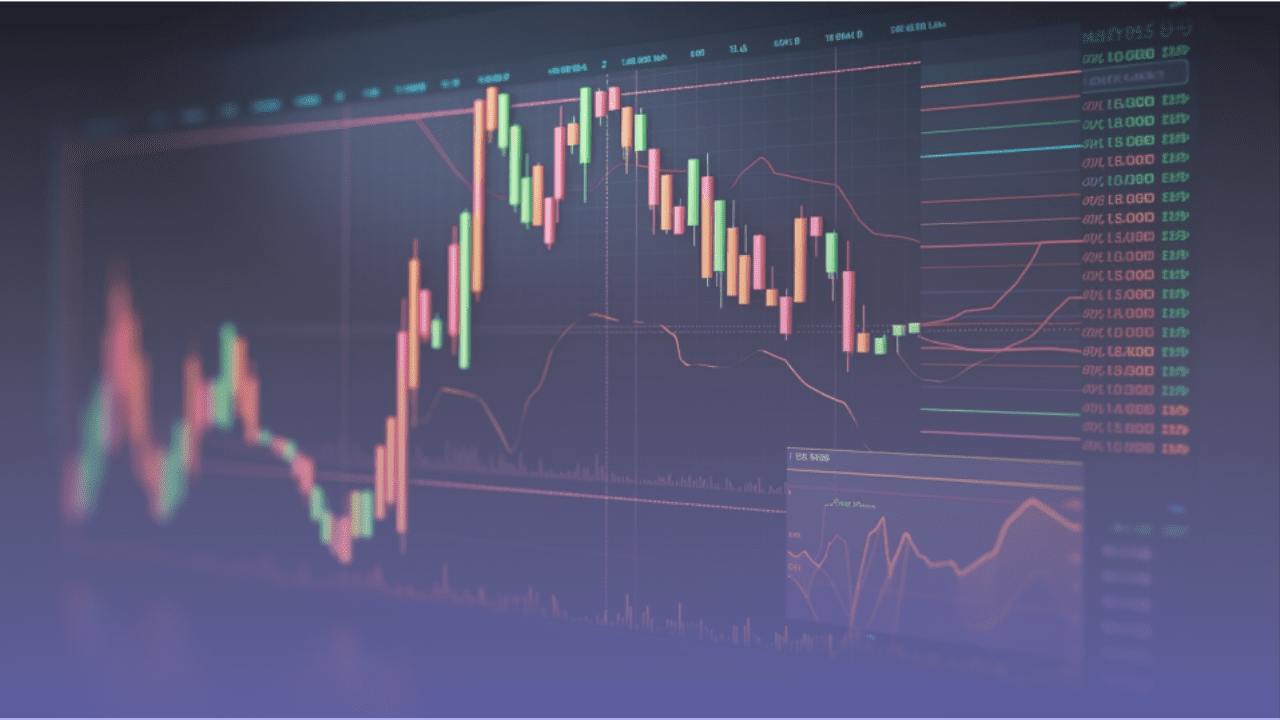Introduction
Volatile markets can be intimidating for traders and investors. However, with the right strategies and mindset, staying calm and profitable is possible even in the face of extreme market fluctuations. In this post, we will explore key strategies and techniques to help you navigate volatile markets and make informed trading decisions. From understanding market volatility to diversifying your portfolio and using technical and fundamental analysis, we’ll cover everything you need to know to succeed in volatile markets. So, let’s dive in and explore some of the best practices for trading in volatile markets.
Understanding Market Volatility

Understanding market volatility is crucial for traders or investors because it can affect your trading or investment decisions and the overall performance of your portfolios. High volatility in the market can significantly affect your investment, whether it is profitable or not.
Market volatility refers to the frequency and magnitude of changes in the prices of financial assets, such as stocks, currency, cryptocurrency, bonds, commodities, and others. Various factors, such as economic events, political developments, company news, and investor sentiment, can affect it.
One of the easiest ways to understand market volatility is by looking at historical trends and patterns from previous years. This way, you can identify what news or events can trigger volatile market conditions and how long they can last. This will help you make better decisions when you come across similar news or events that are happening now.
Market volatility is a natural part of investing and can create opportunities for long-term growth. It cannot be avoided because there are times when the market will rise or fall. Make sure you have precise risk management and investment goals to survive when the market is volatile.
Keeping Emotions in Check
Keeping emotions in check is a crucial aspect of trading in volatile markets. You must remain calm and avoid panicking when the market conditions are volatile. This is why it’s essential to have a good trading plan and risk management.
If your emotions are unstable and cause you to experience fear, greed, and panic, it can lead to bad decisions that will result in losses.
Always be disciplined and follow the trading plan you have created beforehand, don’t make hasty decisions just because of short-term market fluctuations.
It is essential to cultivate a mindset of resilience and adaptability. In volatile markets, unexpected events can occur, and it’s critical to be prepared to adjust trading strategies as needed. This involves maintaining a positive attitude, learning from mistakes, and adapting to changing market conditions.
Diversifying Your Portfolio
In trading or investing, the term diversification is very commonly used because it’s one of the effective strategies to deal with volatile markets and reduce the potential for losses.
Diversification involves investing in various assets from different categories, such as stocks, bonds, and commodities. This can reduce exposure to any asset or sector and provide a more stable overall portfolio.
You can also diversify within asset categories by investing in a mix of companies or funds with different risk and return potential levels. This can help to balance out possible losses and gains across the portfolio.
Another way to diversify is to invest in assets with low correlation to each other. This means investing in assets that tend to move independently so that gains in another may offset losses in one asset.
However, having a diversified portfolio can make you feel more confident in your overall investment strategy and avoid making bad decisions due to short-term market fluctuations.
Using Technical Analysis
Technical analysis helps traders identify patterns on charts, like head and shoulders or double bottoms. These patterns can give hints about possible market trends and guide decisions on buying or selling assets.
One widely used tool in technical analysis is the moving average. It calculates the average price of an asset over a certain period. Traders can employ moving averages to spot trends and identify potential support and resistance levels in the market.
Another popular tool is the Relative Strength Index (RSI). It measures the strength of price movements and can indicate if the market is overbought or oversold.
It’s important to note that technical analysis isn’t infallible. It’s wise to consider other factors as well. Combining technical and fundamental analysis can provide a more comprehensive understanding for making informed trading decisions.
Using Fundamental Analysis
Using fundamental analysis is another critical strategy for trading in volatile markets. Fundamental analysis involves analyzing economic and industry data to identify potential long-term trends in the market.
Fundamental analysis involves assessing a company’s financial health and performance. This includes looking at financial statements like income and balance sheets to understand revenue growth, profit margins, and debt levels.
You can also analyze industry trends and economic indicators, such as GDP growth and inflation rates, to spot potential market trends and opportunities.
Another important factor in fundamental analysis is understanding the competition in a specific industry. This means researching things like market share, barriers to entry, and potential industry disruptors.
By using fundamental analysis, you can make informed decisions about which assets to buy or sell based on their long-term growth potential. This approach helps you make confident investment and trading decisions, even when facing short-term market fluctuations, by identifying companies with solid financials and growth prospects.
Staying Informed
Staying informed is an equally important strategy for trading in volatile markets. Markets can be unpredictable, and changes can happen quickly. Therefore, you should always stay up-to-date on the latest news and trends to obtain information early and predict the market’s direction.
There’s no need to be confused about where to find information. You can use social media to stay informed. You can follow industry experts and analysts on platforms like Twitter and LinkedIn to gain insights and updates on market conditions. You can also use sentiment indicators like the Fear and Greed Index to track market sentiment and make informed investment decisions.
In Conclusion
Trading in volatile markets can be challenging, but it can also provide opportunities for growth and profitability. You can stay calm and make profitable trading decisions by understanding market volatility, keeping emotions in check, diversifying your portfolio, using technical and fundamental analysis, and staying informed.
It’s important to remember that trading in volatile markets requires discipline, patience, and a long-term perspective. Don’t let short-term market fluctuations and emotions cloud your judgment; always keep your risk management and investment goals in mind. With the right strategies and mindset, you can thrive in volatile markets and achieve your trading and investment objectives.







